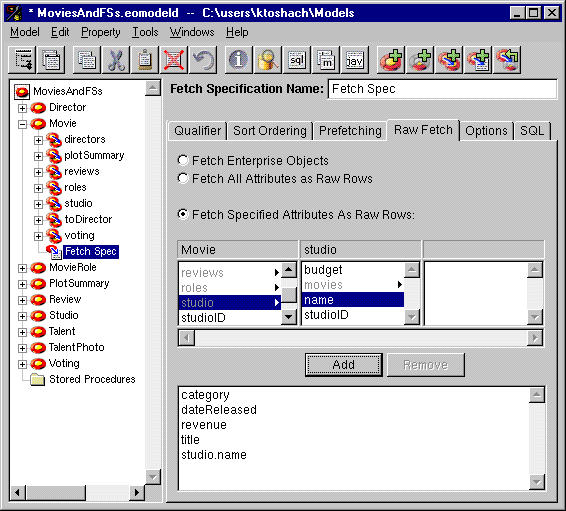 Table of Contents
Table of Contents  Previous Section
Previous Section
Configuring Raw Row Fetching
When you perform a fetch in an Enterprise Objects Framework application, the information from the database is fetched and stored in a graph of enterprise objects. This object graph provides many advantages, but it can be large and complex. If you're creating a simple application, you may not need all of the benefits of the object graph. For example, a WebObjects application that merely displays information from a database without ever performing database updates and without ever traversing relationships might be just as well served by fetching the information into a set of dictionaries rather than a set of enterprise objects.Enterprise Objects Framework 3.0 supports this concept of a simplified fetch, called raw row fetching. In raw row fetching, each row from the database is fetched into an NSDictionary object.
When you use raw row fetching, you lose some important features:
- The NSDictionary objects are not uniqued.
- The NSDictionary objects aren't tracked by an editing context.
- You can't access to-many relationship information. (To access to-one relationship information, you use key paths such as "movie.dateReleased".)
Figure 46. Specifying a Raw Row Fetch

 Table of Contents
Table of Contents  Next Section
Next Section